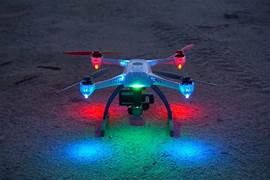How to Modify a Drone for Night Vision and Infrared Recording
Modifying a drone for night vision and infrared recording can greatly enhance its capabilities, making it useful for various applications such as security surveillance, wildlife monitoring, and search and rescue operations. While standard drones are equipped with conventional cameras, integrating night vision and infrared technology allows them to operate effectively in low-light and dark environments. By following the right steps and using suitable equipment, drone enthusiasts can upgrade their drones for enhanced nighttime performance.
The first step in modifying a drone for night vision is selecting the right camera system. There are two primary options: low-light cameras and infrared (IR) cameras. Low-light cameras use advanced sensors to amplify available light, making them effective for recording in dim environments. On the other hand, infrared cameras capture heat signatures, allowing the drone to detect objects and living beings in complete darkness. Many commercial infrared cameras are available as lightweight modules that can be mounted onto a drone.
After choosing the appropriate camera, the next step is integrating it with the drone. Many drones come with modular camera mounts that allow easy installation of additional equipment. If the drone lacks a compatible mount, custom brackets or gimbals may be required to ensure stability during flight. It is crucial to consider the camera’s weight and power requirements, as heavier cameras may affect the drone’s flight time and maneuverability.
Power management is another important aspect of drone modification. Infrared cameras and night vision systems may require additional power sources to operate efficiently. If the drone’s battery cannot support the extra load, adding an external battery or upgrading to a higher-capacity power system can help maintain stable performance. Proper wiring and insulation should also be ensured to protect the drone’s electrical components from potential damage.
Enhancing the drone’s software capabilities is also beneficial for night operations. Some drones allow users to integrate thermal imaging software that processes infrared data in real-time, providing clear visuals of heat-emitting objects. Flight stabilization and obstacle avoidance features should also be optimized for nighttime conditions, ensuring smooth and safe navigation in low visibility.
Testing and calibration are essential before deploying a night-vision-equipped drone for field operations. Conducting trial flights in controlled environments helps in fine-tuning camera angles, exposure settings, and overall flight stability. Adjustments may be needed to ensure optimal image quality and seamless data transmission to the operator’s device.
In conclusion, modifying a drone for night vision and infrared recording requires selecting the right camera, ensuring proper integration, managing power consumption, optimizing software, and conducting thorough testing. With these enhancements, drones can operate effectively in dark conditions, offering valuable applications across multiple fields. As technology continues to advance, further innovations in drone night vision systems will expand their potential even more.
.png)






Leave a Comment
Your email address will not be published. Required fields are marked *